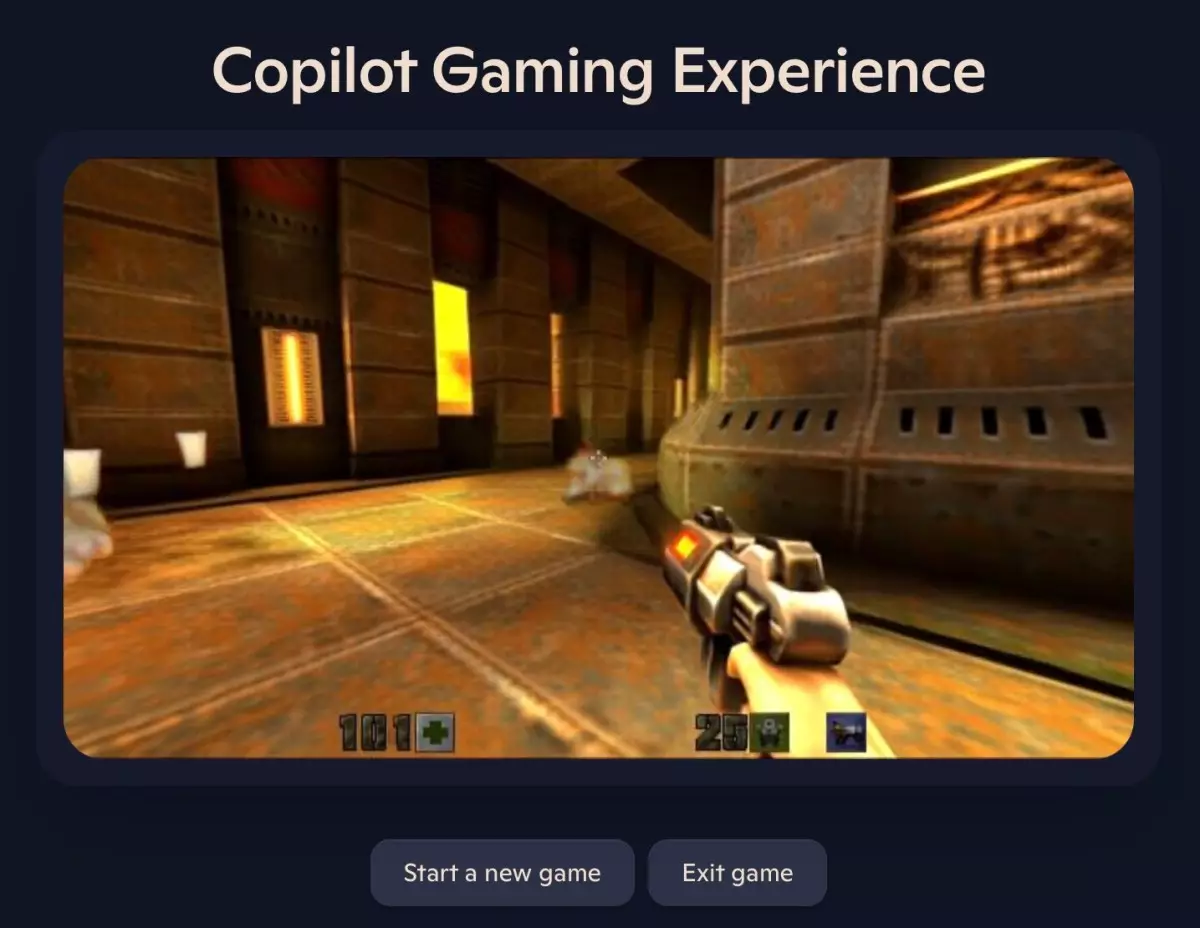Microsoft has made a bold statement in the tech world by unveiling a browser-based, playable version of the iconic Quake II. Positioned as a showcase for their Copilot AI platform, this initiative presents a tantalizing glimpse into the potential of artificial intelligence in the gaming realm. However, while the concept is exhilarating, the actual execution has revealed certain limitations that warrant a deeper examination. Microsoft’s ambitious endeavor invites us to explore not only what AI can achieve but also its implications for the future of gaming.
The Muse family of AI models represents a seismic shift in how players might interact with games. According to Microsoft, this approach permits real-time engagement with the model, allowing players to manipulate actions similar to how they would in traditional gaming environments. However, despite the innovative framework, players have reported a somewhat lackluster experience. This experience underscores the distinction between merely interacting with a model and genuinely engaging in a well-crafted video game. The nuances that elevate gaming—immersive storytelling, developed characters, and precise mechanics—seem to escape this early demonstration.
The Limitations of AI-Based Gaming
Critics, such as writer Austin Walker, have pointed out significant flaws in this AI experiment. For instance, Walker documented his frustrations while navigating the demo, highlighting that players often find themselves ensnared in repetitive scenarios. Microsoft’s acknowledgement of “limitations and shortcomings” in their AI model sheds light on issues like fuzzy enemies and inaccurate health counters that detract from the player experience.
Interestingly, the AI’s struggle with object permanence stands out as a peculiar quirk. The capability to “teleport” around the map by simply altering one’s line of sight can lead to unintended gameplay experiences. This could either be viewed as a creative twist or a significant drawback, emphasizing the difference between static game design and a dynamic AI model. The unpredictable behavior of the AI contributes to an environment that, rather than challenging players in strategic ways, often frustrates.
Rethinking Game Design with AI
At the core of this discussion is a fundamental realization: AI can mimic certain aspects of gaming but is currently unable to replicate the intricate tapestry that embodies successful game design. The essence of games like Quake lies in their meticulously crafted elements—code, art, sound—working in perfect harmony to facilitate uniquely engaging experiences. Microsoft’s Copilot, while ambitious, may struggle to fully grasp this complexity.
Moreover, the concept of using AI for game preservation can be a double-edged sword. The fascinating prospect of making classic titles easily accessible on modern platforms raises questions about authenticity. Whereas preserving a game often involves maintaining its original design and experience, an AI-driven version risks overselling a diluted experience that may not resonate with die-hard fans who cherish the historical integrity of these games.
The Future of Gaming: Opportunities and Challenges
Despite the setbacks highlighted by early testers, embracing AI in gaming showcases a forward-looking mindset that could spur innovation. As AI technology improves, the potential for more engaging game experiences becomes increasingly promising. However, there needs to be a balanced approach. Game developers must weigh the benefits of these technologies against the richness of traditional gameplay, where human creativity often leads to unexpected surprises and deep engagement.
In discussions surrounding the Copilot AI, there exists a critical need to remember the essence of gaming. While technology can enhance accessibility and even introduce novel gameplay mechanics, the heart of gaming lies in its ability to evoke emotions, tell stories, and challenge players in ways that current AI models struggle to capture. As Microsoft and others venture into this realm, fostering creativity alongside technological advancement will be crucial to ensuring AI becomes a powerful ally rather than a diminishing replacement.
In this exciting yet uncertain landscape of AI-driven gaming, it’s essential to remain vigilant in questioning the impact of these innovations on the experiences that gamers hold dear. The future is ripe with possibilities, but it must tread carefully to respect the rich lineage of video games while exploring the uncharted territory of artificial intelligence.

